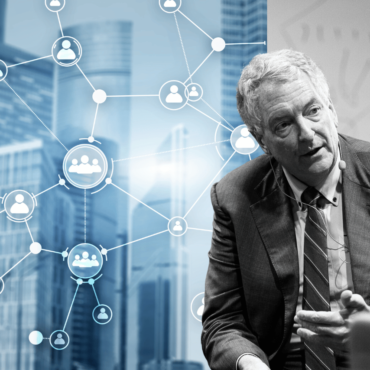
Hearing your heartbeat: How employee listening drives a positive employee experience and culture at work
today2022.08.15. 5146 17 5


Farai Mugabe, Content & Research, The HR Congress
WHY SHOULD YOU CARE?
More than ever companies need to “listen to the sound” behind the numbers of their employee listening programs. Employees have been exposed to trauma due to COVID-19 and a generally uncertain environment. We now live in an era of human-centered leadership where true leaders listen and care for employees to create thriving businesses.
A new world of work emerged after COVID-19. Research by Gartner reveals that 65% of employees have shifted their thinking toward their employer because of the COVID-19 pandemic.1 In 2018, Gartner predicted that 59% of organizations will use engagement data from sources other than formal surveys in 2019.2 Research by the Josh Bersin Academy indicates that tracking employee engagement numbers does not help solve problems. It is important for companies to “listen to the sound” behind the numbers of their employee listening programs.3
Why is employee listening the future of employee experience and culture?
- The changing environment
The environment has changed, and social values, employee expectations, and personal values have changed because of COVID-19. Organizations need to take time to listen to the heartbeat of employees so they can adjust accordingly. Before the pandemic, employee experience was driven by inspirational leadership, commuter vouchers, pets at work, fast growth, wellness programs, and health insurance. The COVID-19 pandemic performed a reset on employee experience. Suddenly there was less commuting to work and minimum face-to-face meeting and traditional handshakes. Online tools such as Zoom and Microsoft Office teams replaced work offices. Employee experience became more centered on work at home, traffic patterns, infection reporting, family leave, real-time reporting, and leader resilience. The environment is continuously changing from VUCA to BANI, so business leaders must focus more on listening to their employees.3
“As the world crashed around us in March 2020, everything changed,” said Josh Bersin and Kathi Endres. Most companies were forced to quickly handle changes in business models, remote work, employee safety, children at home, a rise in care requirements at home, and fears of job loss. The world has changed ever since then. Organizations must listen to their employees’ concerns to drive a positive work experience and culture. Deutsche Telecom was able to realize an increase in employee engagement by 11 points amongst its 210 000 plus staff “because people felt they had a voice, felt heard, and saw action.”3
- Driving innovation
Companies require new ideas to grow and expand their business. Employee listening is the umbilical cord between employees’ ideas and the organization. 84% of CEOs believe innovation is critical for growth, as per a study by McKinsey and Company, but only 6% of CEOs are satisfied with their innovation performance. One of the key sources of innovation, ideas, and creativity is in-house talent. Companies must listen to employees to generate innovation, ideas, and creativity from in-house talent.5
The world has shifted from VUCA to BANI.6 It is no longer business as usual, and companies have to unlock their talent’s creativity and innovation to win in the marketplace.7 To get ideas to grow and expand the business from employees, companies must carefully listen to employees. We now live in an era where human capability is making a difference.8
- Making impactful decisions
Several HR ideas fail because they are disconnected from reality on the ground. In 1998, Dave Ulrich wrote, “HR’s activities appear to be and often are disconnected from the real work of an organization.”9 Years have passed, but there is still a disconnect between HR initiatives and the organization’s aims. Laura Schroeder recently wrote an eye-opening article entitled, “Manager in the Middle: The Disconnect between Managers and HR today.” The article clearly shows how HR is often disconnected from managers and the reality on the ground. Several HR strategies fail to drive the expected impact because of a disconnect between what the users (employees) want versus solution developers (HR and business leaders). For HR to be successful, there is a need to have alignment within the context of operation. This means that HR has to listen first before they come up with HR interventions that are impactful and can garner a high degree of success.10
- Enhancing employee engagement and experience
Employee listening drives a positive work experience and culture. Employees feel more engaged when they feel that their voice is heard.11 According to Deloitte, companies with highly engaged employees outperform peers by 147% in earnings per share. Companies who listen to their employees double their customer satisfaction, as reflected in their net promoter score.12 Research by Gallup reveals that 63% of employees believe that it is “very likely” or “somewhat likely” that they could find a job as good as the one they have. Involving employees will make them feel loved and welcome, resulting in an increased employee engagement score and higher staff retention rate.13
What should companies do?
- Integrate employee feedback through a carefully thought out employee listening strategy
Employee listening and feedback remain broken and unintegrated. It’s broken and based on multiple data sources that do not speak to one another. There are various sources of employee feedback that companies have at their disposal. These include employee exit interviews, employee engagement surveys, team meetings, online discussions, mood surveys, and hiring manager satisfaction pulse surveys. Often the feedback platforms companies have are usually used in isolation without significant alignment. There is a need to make these talk together and function in a coordinated manner. Companies should deliberately develop a carefully thought-out employee listening strategy that helps to achieve business purpose and results.
- Enhance the accessibility of employee data
A large number of HR data is not readily accessible. Deloitte indicates that only 8% of companies indicated they have usable data. In some companies, large chunks of HR data are locked in print formats, which makes it cumbersome to make it open to analysis. Talent and business leaders have to ensure that people data they collect from employee listening programs are readily accessible and safely stored. That way, HR can have an arsenal of information to deliver value on disposal.14
- Move from data to insights.
It is one thing to collect data and another thing to use for actionable acts. Collecting data and making good presentations with little or no action does not deliver significant value. Business leaders are more interested in results, not just talking. Data is unprocessed and unorganized information, while insights deal with digging deeper into data and connecting missing links that will help make sound decisions. Employee listening involves collecting a lot of data from multiple sources. For data to be useful, HR leaders should find meaning from the data and develop comprehensive plans and actions to close gaps.15
- Go digital when it comes to employee listening
COVID-19 accelerated digital transformation. Employees are now exposed to various digital tools that help deliver work. The workplace is no longer just a physical place where employees meet during office hours and go back home. Employees have become more digitally connected and collaborate digitally.16 There is now a very thin line between home and work as employee experiences are now clouded with digital connections.17 HR and businesses have digital employee listening to effectively collect and analyze people’s data in an agile manner.
- Expand people data beyond the traditional view of people analytics data
The field of people analytics has rapidly expanded from workforce data and analytics such as employee age profiles, work location, gender, and contract status. Employees are increasingly more concerned with data on how to get the best out of their people. This means that data on all key aspects of HR, such as employee experience, recruitment, performance management, payroll and benefits, training, promotion, and wellness, has become more critical in HR strategy development. HR analytics has become more strategic and critical for business strategy. HR and business leaders must expand their view on people analytics and view it as a way to unlock business value.
- Focus on human-centered leadership
We now live in an era of human-centered leadership.18 There has been a high level of growing worldwide.19 The psychological contract has changed. Employees have been exposed to trauma due to COVID-19 and a generally uncertain environment. Human-centered leadership listens and cares for employees. They make work human and can deeply connect with people by listening to them. Business leaders should be able to focus on human-centered leadership that will help create thriving businesses.
The future is human. Leaders must listen to their organization’s heartbeat to get the best out of their people. They also need to make time to listen to others so they understand what is happening in the world around them. The HR Congress is hosting events on employee experience,culture, and leadership which will allow HR leaders to converge in shaping the future of work.
…

1 Employee seek personal value and purpose at work. Be prepared to deliver, by Jackie Wiles, Gartner
2Is it time to toss your out your employee engagement survey, Jackie Wiles, Gartner
3Employee experience in 2021 and beyond: Listening at scale, by Josh Bersin and Kathi Enderes, Josh Bersin Academy
4Employee listening, hear your organization’s heartbeat, by Thomas Papp, HR Congress
https://hr-congress.com/2022/03/07/employee-listening-feel-your-organizations-heartbeat/
5Growth and Innovation, by McKinsey and Company
6From VUCA to BANI: Five key HR issues to deal with for HR teams today, BY Farai Mugabe, HR Congress
7Agility in HR, by Mihaly Nagy, HR Congress
https://www.youtube.com/watch?v=qQr9sTd_Ok8
8Dave Ulrich: Five HR Competencies and Actions to Enable Renewal Through Human Capability, by Dave Ulrich, HR Congress
9A new mandate for Human Resources, by Dave Ulrich, Harvard Business Review
https://hbr.org/1998/01/a-new-mandate-for-human-resources
10Managers in the Middle: The Great Disconnect between Managers and HR today, by Laura Schroeder, HR Congress
11Back to Basics: What is Employee Experience, by Aaron Kinne, Work Human
https://www.workhuman.com/resources/globoforce-blog/back-to-basics-what-is-employee-experience
Integrating workforce data to measure experiences and drive business outcomes
12Integrating workforce data to measure experiences and drive outcomes, by Jannine Zucker, Kristin Starrodub, Tim Greulich and Dave Pearson
13Perspectives on designing your organisation’s employee experience, Gallup, Gallup
14People Analytics Comes of (Digital) Age, by Laurence Collins and Akio Tsuchida, CFO Journal content by Deloitte
https://deloitte.wsj.com/articles/people-analytics-comes-of-digital-age-1489464131
15The Rise (and Fall?) of HR Analytics: The Future Application, Value, Structure and System Support, by Sjoerd van den Heuvel and Tanya Bondarouk, Emerald Insight
16Without the Human, It’s just work, by WorkHuman, WorkHuman
17HR at the hub of driving Digital Employee Experience (DEX) in an evolving workplace, by Farai Mugabe, HR Congress
18The Human-Centred Leader, by Lynne Levy, WorkHuman
https://www.workhuman.com/resources/globoforce-blog/the-human-centered-leader
19 The pandemic has taught us to be closer to our people, by Farai Mugabe, HR Congress
Written by: Mihaly Nagy
Culture Employee Experience HR Strategy Leadership
Previous post

- 3084
- 2
labelArticles today2022.08.15.
What does the metaverse mean for the future of work?
By Mark Mortensen, Associate Professor, INSEAD WHY SHOULD YOU CARE? “As with any kind of revolutionary technology, the metaverse should be approached with a healthy amount of caution, but there’s [...]
Similar posts

labelArticles today2024.07.24.
AI-Powered HR: Strategic Benefits and Practical Applications

labelArticles today2024.06.24.








Post comments (0)